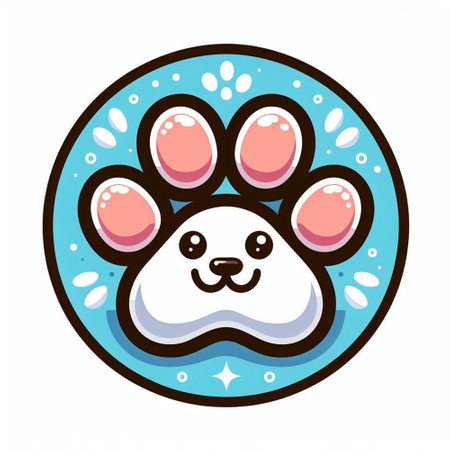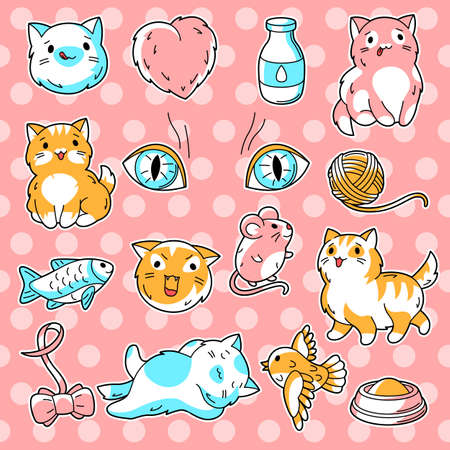1. Understanding Grain-Free Cat Food
When shopping for cat food in the U.S., you’ve probably seen bags and cans labeled as “grain-free.” But what does this actually mean, and why do so many pet food brands market their products this way?
What Does “Grain-Free” Really Mean?
Grain-free cat food simply means that the recipe does not include any grains such as corn, wheat, rice, barley, or oats. Instead, these foods often use other sources of carbohydrates like potatoes, peas, or lentils to provide texture and energy.
Common Ingredients in Cat Food: Grain vs. Grain-Free
| With Grains | Grain-Free |
|---|---|
| Corn | Peas |
| Wheat | Lentils |
| Rice | Potatoes |
| Barley | Chickpeas |
| Oats | Tapioca |
Why Do Brands Market Grain-Free Cat Food?
The grain-free trend started with dog food but quickly made its way to cat food aisles across America. Many brands promote grain-free diets by claiming they are more natural or better for cats digestion. This idea comes from the fact that cats are obligate carnivores, meaning their bodies are designed to get nutrients mainly from meat rather than plants or grains.
Brands also respond to concerns from pet owners about allergies or sensitivities to certain grains. Even though true grain allergies in cats are rare, the marketing often suggests that grain-free formulas could help with digestive health or skin issues.
Quick Facts About Grain-Free Cat Food Marketing in the U.S.
- “Ancestral Diet” Claims: Brands often say grain-free diets mimic what wild cats eat.
- Sensitivity Solutions: Some products promise relief for cats with itchy skin or upset stomachs.
- Premium Positioning: Grain-free foods are usually sold as higher-quality options and may come with a higher price tag.
If you’re wondering whether grain-free is really better for your cat, it helps to understand what’s inside the bag—and why companies are eager to put “grain-free” front and center on the label.
2. Nutritional Needs of Cats
Understanding Your Cat’s Natural Diet
Cats are obligate carnivores, which means their bodies are designed to thrive mainly on animal-based proteins. In the wild, a cat’s diet consists mostly of small mammals like mice and birds, providing them with essential nutrients such as protein, fat, vitamins, and minerals. Unlike humans or even dogs, cats have specific dietary needs that must be met for them to stay healthy.
Key Nutrients Cats Require
| Nutrient | Why It’s Important | Main Sources |
|---|---|---|
| Protein | Supports muscle growth and maintenance; crucial for energy | Chicken, turkey, beef, fish |
| Taurine | Essential amino acid for heart and eye health | Animal tissues (meat, organs) |
| Arachidonic Acid | Fatty acid needed for skin and coat health | Animal fats |
| Vitamin A | Important for vision and immune function | Liver and other animal organs |
| B Vitamins (like niacin) | Support metabolism and overall health | Meat and fish |
The Role of Grains in a Cat’s Diet
Cats in the wild rarely eat grains, so their digestive systems aren’t built to rely on them. While some commercial cat foods use grains like corn or wheat as fillers or sources of carbohydrates, these ingredients don’t provide the core nutrients cats naturally need. That said, grains can offer some energy in the form of carbs and may help keep dry kibble together, but they aren’t considered essential for your cat’s optimal health.
Grain-Free vs. Regular Cat Food: What’s Different?
| Grain-Free Cat Food | Regular Cat Food (with grains) | |
|---|---|---|
| Main Protein Source | Animal-based proteins (chicken, fish, etc.) | Animal-based proteins plus plant-based fillers (grains) |
| Main Carbohydrate Source | P otatoes, peas, lentils (instead of grains) | Corn, rice, wheat, barley |
| Suitability for Carnivores? | Closer to natural feline diet | Less aligned with natural dietary needs |
| P otential Allergen Risk | Lower if your cat is sensitive to grains | Might trigger allergies in sensitive cats |
A Quick Note About Carbs and Cats
Cats don’t need a lot of carbohydrates in their diets. Too many carbs—whether from grains or grain-free alternatives—can sometimes lead to weight gain or digestive issues. Always check the ingredient list when choosing food for your cat to make sure meat is at the top!

3. Common Reasons Pet Owners Choose Grain-Free
Grain-free cat food has become increasingly popular among American pet owners, and there are several key reasons behind this trend. Understanding these motivations can help you decide if a grain-free diet is right for your own cat.
Allergies and Sensitivities
One of the most common reasons people switch to grain-free diets is concern about allergies or food sensitivities. Some cats may show signs of discomfort—like itching, digestive upset, or skin issues—that owners believe could be linked to grains such as corn, wheat, or soy. While true grain allergies in cats are rare, many pet parents report seeing improvements in their cat’s health after switching to a grain-free formula.
Signs That Might Prompt a Switch
| Possible Symptom | Description |
|---|---|
| Itchy Skin | Scratching, licking, or biting at the skin more than usual |
| Digestive Upset | Vomiting, diarrhea, or frequent hairballs |
| Poor Coat Condition | Dull or flaky fur that doesn’t improve with grooming |
Diet Trends and Marketing Influence in the U.S.
The popularity of grain-free cat food is also fueled by trends in human nutrition and strong marketing messages. Many Americans are becoming more health-conscious and looking for similar choices for their pets. Terms like “grain-free,” “natural,” and “premium” can make these foods seem healthier—even if your cat doesn’t have a specific medical need for them. Pet food companies often highlight the idea that cats are natural carnivores who don’t need grains in their diets, which appeals to many owners.
Popular Motivations for Choosing Grain-Free Cat Food in the U.S.
| Motivation | Details |
|---|---|
| Belief in Health Benefits | Thinking grain-free equals higher quality nutrition |
| Mimicking Human Diet Trends | Following gluten-free, paleo, or low-carb trends seen in human diets |
| Recommendations from Vets or Friends | Advice from professionals or word-of-mouth stories about success with grain-free diets |
| Avoiding Artificial Ingredients | Many grain-free brands market themselves as more “natural” or less processed |
In summary, while some pet owners choose grain-free formulas due to medical concerns like allergies, others are motivated by popular trends and marketing messages that suggest grain-free is better for cats. It’s always best to consider your own cat’s unique needs and consult your veterinarian before making any big changes to their diet.
4. Potential Benefits and Drawbacks
Exploring the Advantages of Grain-Free Cat Food
Many cat owners are drawn to grain-free diets because they believe these foods are more natural and healthier for their pets. Here are some potential benefits based on veterinary research and real-world experiences:
| Potential Benefit | Description |
|---|---|
| Allergy Relief | Some cats have sensitivities to grains like corn or wheat. Grain-free formulas may help reduce symptoms such as itching, vomiting, or diarrhea in these cats. |
| Digestive Health | Grain-free diets often include more animal-based proteins and fewer fillers, which may be easier for some cats to digest. |
| Shinier Coat & Skin Health | Cats on grain-free diets sometimes show improvements in skin condition and fur texture, possibly due to higher protein and healthy fat content. |
| Weight Management | Certain grain-free foods are lower in carbohydrates, which can help with weight control if combined with proper portion sizes. |
Concerns and Drawbacks to Consider
Despite the positives, there are also concerns about feeding your cat a grain-free diet. Veterinary experts highlight several points you should keep in mind:
| Potential Drawback | Description |
|---|---|
| Nutritional Imbalance | Some grain-free foods replace grains with starchy veggies like potatoes or peas, which might not always provide the best nutrition for cats. |
| Heart Health Risks (DCM) | The FDA has investigated links between certain grain-free diets and heart disease (dilated cardiomyopathy or DCM) in cats and dogs. More research is needed, but its something to watch out for. |
| Cost Factor | Grain-free options often cost more than traditional cat foods, which can impact your pet care budget. |
| No Proven Need for Most Cats | Most cats do not have grain allergies, so unless your vet recommends it, a grain-free diet may not provide additional health benefits for your pet. |
What Do Veterinarians Say?
Veterinarians generally agree that the best cat food is one that meets your cats unique nutritional needs. While some cats thrive on grain-free diets, others do just as well with high-quality foods that contain grains. If youre considering switching to a grain-free option, consult with your vet to make sure its the right fit for your feline friend.
5. FDA Warnings and Health Controversies
In recent years, grain-free cat food has been at the center of health debates, especially after the U.S. Food and Drug Administration (FDA) began investigating potential links between certain pet foods and heart disease in pets. Let’s take a closer look at what the FDA has found and what this means for your cat.
FDA Investigations into Grain-Free Diets
Starting in 2018, the FDA received reports of cats and dogs developing a heart condition called dilated cardiomyopathy (DCM). Many of these pets were eating grain-free diets, particularly those containing high amounts of peas, lentils, and potatoes instead of grains like corn or rice.
Key Points from FDA Advisories
| Year | Advisory/Action | Main Concern |
|---|---|---|
| 2018 | Initial public alert issued | Possible link between grain-free diets and DCM |
| 2019 | Name brands listed in update | Most reported cases involved grain-free recipes |
| 2020-Present | Ongoing research and updates | No definitive cause identified yet; investigation continues |
What Are Clinical Findings Showing?
While the FDA hasn’t found a direct cause-and-effect relationship, some clinical findings suggest there may be a connection between certain ingredients used in grain-free formulas (like legumes) and heart health issues. However, most reported cases have been in dogs, not cats. Still, experts recommend staying informed as research continues.
The Controversy: Are Grains Really Bad for Cats?
A big part of the controversy is whether grains are truly harmful for cats. Most veterinarians agree that healthy cats can digest grains just fine, and that food allergies to grains are rare compared to protein allergies. The push for grain-free diets often comes from trends in human nutrition rather than strong scientific evidence for pets.
Should You Be Concerned?
If your cat is healthy and thriving on their current diet, there may be no reason to switch—especially if it’s recommended by your vet. If you’re considering a grain-free diet because of marketing claims or personal preference, talk to your veterinarian first to make sure it’s the best choice for your pet’s individual needs.
6. How to Choose the Right Food for Your Cat
Understanding Cat Food Labels
Picking the best food for your cat can be confusing, especially with so many options like grain-free, high-protein, and natural formulas on store shelves. To make a smart choice, start by reading the label carefully. Here are some key things American pet parents should look for:
| Label Term | What It Means | Why It Matters |
|---|---|---|
| Protein Source | Chicken, salmon, beef, etc. | Cats need animal protein as their main energy source. |
| First Ingredient | The item listed first is most plentiful in the food. | A quality cat food lists a real meat as the first ingredient. |
| “Grain-Free” | No wheat, corn, rice, or other grains | Good if your cat has a diagnosed grain allergy, but not always necessary for healthy cats. |
| Ash Content | The mineral content left after food is burned off. | Lower ash is usually better for urinary health. |
| AAFCO Statement | Shows the food meets nutritional guidelines set by the Association of American Feed Control Officials. | Ensures your cat’s food is complete and balanced. |
When Should You Consider Grain-Free?
If your cat has been diagnosed with a grain allergy or specific digestive issues by a veterinarian, grain-free may be a good option. For most cats, however, there is no clear benefit to removing grains from their diet. Some cats may even need certain carbohydrates for energy or fiber. Always consider your cat’s unique needs before switching foods.
Consulting Your Veterinarian
Your vet knows your cat’s health history and dietary needs best. Before making any big changes—like switching to a grain-free diet—talk with your vet. Bring in the labels or take photos of foods you’re considering so you can go over ingredients together. This helps ensure that you’re choosing an option that supports your pet’s age, weight, activity level, and any medical conditions.
Questions to Ask Your Vet About Cat Food:
- Does my cat need grain-free food?
- What protein sources are best for my cat?
- Are there ingredients I should avoid based on my cat’s health?
- Is dry or wet food better for my cat’s lifestyle?
- How can I tell if my cat’s current diet is working?
Quick Tips for Evaluating Cat Food at the Store:
- Look for clear labeling and recognizable ingredients.
- Avoid foods with lots of fillers (like by-products or artificial colors).
- Check for an AAFCO statement to ensure complete nutrition.
- If in doubt, snap a photo and ask your vet before buying!
Selecting the right food doesn’t have to be overwhelming. By understanding what’s on the label and working closely with your veterinarian, you’ll feel confident about what goes into your cat’s bowl every day.


